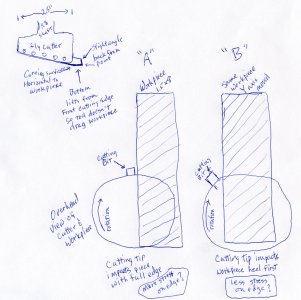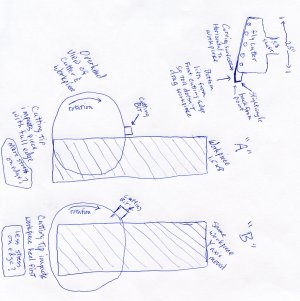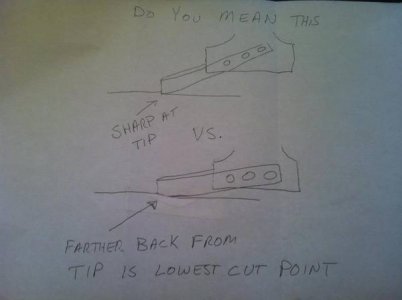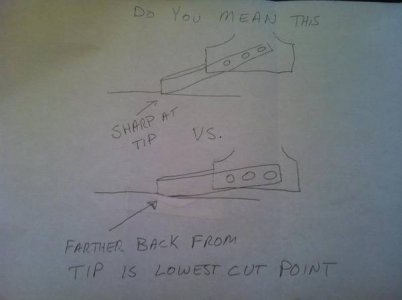I'm really enjoying where this thread is going. Thank you all for jumping in.
I originally asked the question because I wanted to clean up saw marks on a piece before I continue with the actual machining to shape the piece. No real need to change its dimensions. If I use an end mill the piece is smooth (my mill is trammed well with no measurable nod) but you can see each cuts swirl marks. I was wondering if I can use a 2.5" fly cutter to clean up the saw marks on a 1.5" x 8" piece. That would mean it would be in air at least half the time depending on how far the cutting edge protrudes from the fly cutter.
Tony answered the question by saying that the air time doesn't really matter but then qualified it by saying that it needs to be offset so you present a "negative" edge so it doesn't hurt the cutter. Honestly, that stumped me. Thinking about it I came up with this.

Top left shows the cutter ground and inserted. If I understand other threads correctly it is ground horizontal to the mill table? Also the trailing side of the cutter needs to angle up a degree or two so it doesn't drag after the cut is made. Should the tip end angle back from the bottom so it presents a sharp edge? What about the trailing edge of the end of the bit so it doesn't drag as well?
"A" and "B" show two of many ways the bit can be presented. We are looking down on the work. X axis follows the length of the piece, Y of course the short width. The piece is clamped in a vise. It seems to me that "A" would cause greater stress than "B" on the cutting edge. Would it be better to move the Y axis further to the right of "B" in the picture?
In woodturning a negative edge or negative rake would point the bit down from the centerline, even if you engage the center of the workpiece. Similar on metal lathe tools, right? Still having trouble putting that into this perspective on a mill where the tool is turning instead of the work piece.
Thanks again for all your help,
Dave







